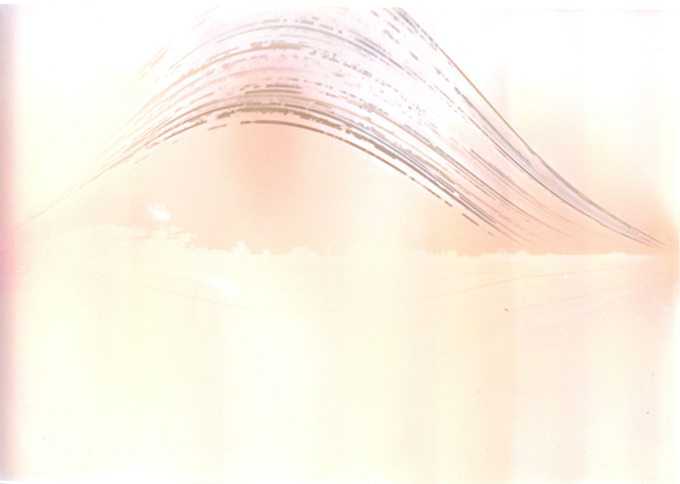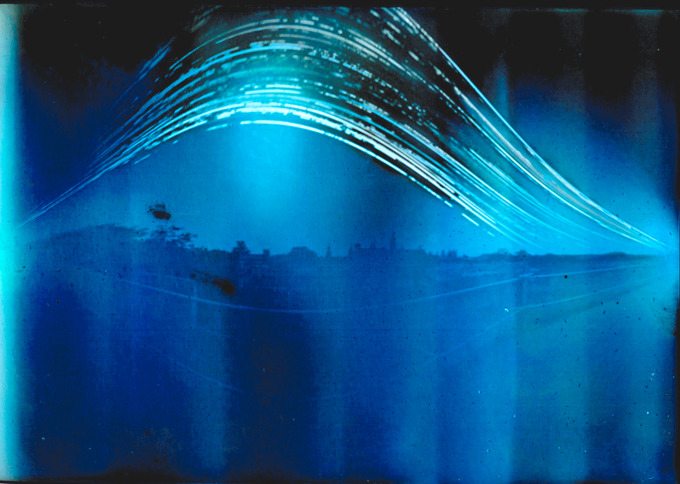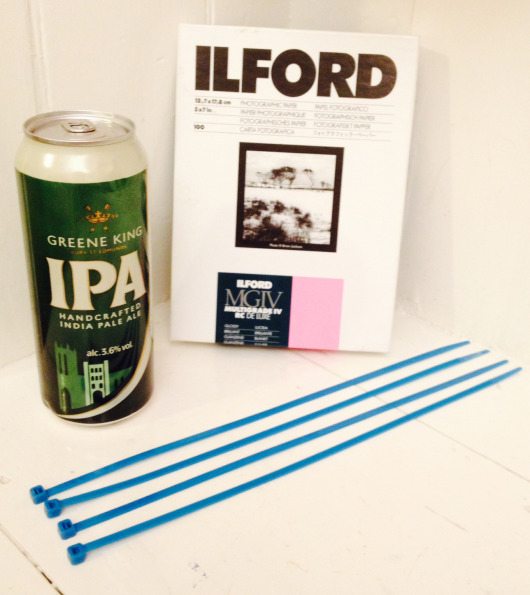Last Updated on 10/25/2014 by Julius Motal
All images by Oli Stevens. Used with permission.
We’ve featured long solargraphs shot with beer cans before, but every time we run across new ones we find something incredibly fascinating. Take this 10 week Solargraph shot by photographer Oli Stevens. Oli is a Biochemistry Masters student, splitting his time between London and Oxford. He’s primarily a 35mm analog photographer who enjoys pushing the technical limits of film photography. What other way to push them than to play with a super long exposure and to work with the most experimental form of the craft: pinhole photography.
To create the image above, Oli created his very own camera from a beer can and used Ilford sheet film to shoot the image. We talked to him more about the setup, the camera, and his photography.
Phoblographer: Why made you want to create a solargraph over a regular pinhole image?
Oli: A few reasons really.
I’ve always been fascinated with all things astronomical ever since I was a kid and once it became evident that becoming an astronaut wasn’t going to pan out quite as 5 year old me intended, I would have to do things from the ground. I’m hoping to try my hand at some high-altitude Near Space Photography with some friends in the near future – it’s as close as I’ll ever get to space and my inner child will have to be satisfied with 100,000ft. I don’t own a digital camera so astrophotography is somewhat inaccessible: I can’t shoot at >>1600ISO and I can’t overlay hundreds of frames in post-processing. Nonetheless, I enjoy applying film/analogue photographic techniques to the sky – be they star-trails or solographs. The extra struggle for me is half the fun. Failure just leads to more tinkering and, consequently, more attempts, which is the whole point of it anyway.
I think in response to digital being such a versatile and capable format, I wanted to see what you could do with analog photography which was unusual. I stumbled across the so-called “alternative processes” of which this is one. Mordançage is next on my list whereby you degrade the print causing gelatin veils to lift off the paper producing a stunning effect. (Video and final image).
Finally, and probably most importantly, I think long exposure photography is beautiful; whether it’s capturing flowing water becoming a silky layer or headlights forming neon streams. So when I discovered something which demanded an exposure as long as several months, was a non-digital process (indeed not even requiring film), and was something a little off the beaten track, I was seduced.
Phoblographer: Talk to us about the gear that you used. What was the aperture of the camera? I’m assuming you made the camera yourself too…
Oli: The gear is composed of two beer-cans with the drinking ends cut off, taped together to form a light sealed container. Inside is a curled piece of darkroom photographic paper (shiny side facing in!). I use Ilford Multigrade IV, but any type will do. 5×7” fits neatly inside this two beer-can setup. You need to load the paper into the camera under a redlight or darkness as the paper fogs quickly under light. Prick a pinhole about half-way up the can and stick a piece of black tape over it until the can is in position. The smaller the pinhole, the better the resolution, but the longer the exposure needs to be. This image comes from a 10-week exposure with an aperture of just under 1mm.
At this stage you can store them for as long as you like before exposure. Once you’ve rigged it up, peel off the “shutter” and that’s it. It’s really as easy as that. Total cost is no more than £1.
When you come to collect the camera, you don’t need to be so careful about keeping the paper in darkness as it’s considerably less photosensitive than when you started. That said, I’ve noticed that multiple scans lead to deteriorating images, so bleaching will still occur.

Phoblographer: This took place over ten weeks, what preparations did you make to ensure that it wouldn’t get bumped around, disturbed, or tampered with?
Oli: This image comes from a set of cameras rigged on the tower of St. John’s College, Oxford. Consequently I was very fortunate in that there could be no tampering or disturbance. I just had to account for the weather: a combination of zipties and gaffer tape was easily sufficient. I’ve just set up a series around Oxford which I’ve spray painted black and attached a note saying “Pinhole camera. Do not remove”. Choose somewhere high up, hard to spot or barely trafficked and point them SW/S/SE. At the end of the day, you’re bound to lose some but that’s how it is.
Phoblographer: Why did you get into photography to begin with?
Oli: Photography has been my favourite art form for a while now. You can draw or paint anything your imagination permits but with photography you’re obviously constrained to the world around you. You capture a 1/1000th of a second of a scene and that’s it. No motion, no sound, just an image. To make something which is visually striking and even capable of evoking emotion in a single snapshot is remarkable. I’m certainly not saying my photography approaches anything anywhere near that but that potential appeals to me. I’m the same way with literature: I prefer non-fiction to fiction. Knowing that a story behind the book or the photograph exists, makes it all the more powerful. And it’s immensely enjoyable. I can throw my iPod on and just go for a walk. Wander aimlessly until I find something. Gets me out of the lab and away from my computer.
Why film photography? I enjoy having full control over the whole process from film selection to darkroom work. It forces you to be more selective with your images and composition and, I hope, makes me into a better photographer. You’ve got 36 shots on a roll and maybe a couple of rolls in your pocket. Even more so when you’re shooting medium or large format film.
For me it’s plain and simple: it’ll never be my profession and I’ll never be Cartier-Bresson, but it’s a hell of a lot of fun. From the feeling when you crack open a developing tank and see all your shots emerge to dancing in the dark waiting for your prints to develop – it’s pretty addictive.



